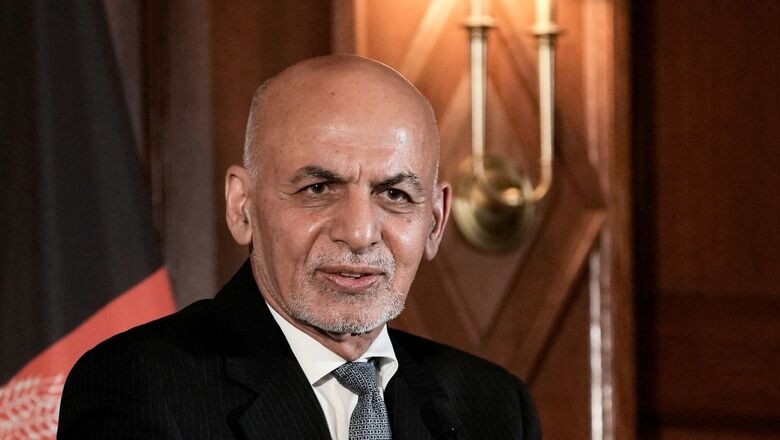
views
President Ghani decided to begin his presidency by bringing about a paradigm shift in Afghan policy. He began by conciliating Pakistan and forging stronger relations with China, perceived to have more influence in Islamabad than the United States (US). He believes that without Pakistan’s fullest cooperation, it will be impossible to ensure peace and stability in Afghanistan. Through the 1980s, Pakistan became the fulcrum of the US-, Saudi- and China-led effort to oust the former Soviet Union from Afghanistan.
After the Soviets left, Pakistan helped establish the post-People’s Democratic Party of Afghanistan seven-party alliance government in Kabul in 1992. It then helped install the Taliban government in 1996. Post 2001, as it assisted the US in its global war against terrorism, it behaved simultaneously as a firefighter and an incendiarist. It provided shelter to the Al-Qaeda (AQ) and Taliban leadership—its Shura, or leadership council, was Quetta-based—and equipped and nurtured the bruised Afghan Taliban back into a formidable fighting force. Over the past five years, Pakistan has brokered peace between the US and the Taliban, and is now pushing the Afghan government to share power with the Taliban.
India showed remarkable steadfastness and patience in staying the course with Afghanistan, even while New Delhi was conscious that Ghani had pursued fundamentally different foreign and security policies from his predecessor. Notwithstanding the shift in Kabul’s preferences, Modi remained steady in his responses. All of the Indian commitments made to Afghanistan were kept, and even added to, in step with Afghanistan’s preferences and requirements. The vicissitudes of internal political change, which tend to skew relations particularly among neighbours, were not allowed to adversely affect India-Afghanistan relations.
In an unusual gambit to script a new narrative between Afghanistan and Pakistan, Ghani visited Pakistan soon after assuming presidency, calling on the Chief of Army Staff at the Pakistani Army’s general headquarters in Rawalpindi even before meeting either Pakistan’s prime minister or president. He told his interlocutors in Rawalpindi and Islamabad that the two countries had been in an undeclared state of war and they had to begin by normalizing relations and building mutual trust, and thereupon move towards cooperation in a time-bound manner. Ghani exulted at the end of his visit that he had overcome with his hosts obstacles of the past 13 years.
EXCLUSIVE | As Taliban Close in on Kabul, New Peace Deal Being Drawn. Ghani to Go
Moreover, Ghani spelt out in his inaugural address that Afghanistan’s external relations were set within five concentric circles, with India featuring in the second-last circle. In his first meeting with Modi, Ghani said that India and Afghanistan should maintain economic relations, implying that their strategic ties be kept in abeyance.
Ghani based his Pakistan gambit on the understanding that Pakistan’s help was critical in ensuring peace and stability in Afghanistan because the Taliban received shelter, sanctuary and support from Pakistan. In a well-reported conversation at the United States Institute of Peace, in early 2015, he said:
The problem fundamentally is not about peace with the Taliban, the problem is fundamentally about peace between Pakistan and Afghanistan. For 13 years, we have been in [an] undeclared state of hostilities and this is the definition that we offered to our Pakistani counterparts, they have accepted this definition of the problem. That is the breakthrough.
Given Pakistan’s actions in the past four decades, this was perhaps too much to hope for, but there was no harm in trying.
The Pakistani Army and civilian leadership made three initial promises to Ghani: first, that they would prevent the Taliban from launching an offensive in Afghanistan; second, that they would take action against the Haqqani Network; and third, that they would persuade the Taliban to initiate peace talks with the Afghan government. On the basis of these assurances, and that Pakistan shall not thenceforth make any distinction between ‘good’ and ‘bad’, the Taliban and the Pakistani Army would take action against all terrorists, without discrimination. Ghani felt optimistic about the prospects of peace. He began his presidency by taking active steps against members and leaders of the Tehreek-e-Taliban Pakistan sheltered in Afghanistan. He agreed to exchange databases on terrorists available with the Afghan National Directorate of Security (NDS) with the Inter-Services Intelligence (ISI) of the Pakistani Army, without the guarantee of similar access to inputs on the Quetta Shura or the Haqqani Network of the Taliban. This provoked the head of the NDS, Rahmatullah Nabil, to protest, and eventually, to resign.
ALSO READ | Afghanistan Headed for Apocalypse, India Must Brace for a Wave of Terror
Instead of ceasing their military campaign, the Taliban commenced the most virulent attacks ever within Afghanistan since their defeat in 2001, and the Haqqani Network continued to enjoy impunity and support from the ISI. A promise kept by the Pakistani Army was in getting the Quetta Shura to agree to come to the negotiating table, having claimed for months that the Taliban leader Mullah Omar was fully backing the process. Within days of the 7 July 2015 peace talks in Murree, it became known that Omar had been dead for 27 months. His endorsement of the peace talks was clearly a hoax. The rejigged Shura, backed by the Pakistani Army, was never committed to reconciliation. This was a fact soon established and reconfirmed by Taliban actions on the ground, including attacks on the electoral processes of Afghanistan.
The Taliban’s offensive actions in Afghanistan multiplied instead of ceasing. Their 2015 summer offensive, Operation Azm, began even as Pakistan publicly dissociated with them.
The Haqqani Network, described in testimony to the US Congress by Admiral Mike Mullen, then Chief of the US Joint Chiefs of Staff, as a ‘veritable arm’ of the ISI, instead of being quietened, extended its control over the Taliban, with its leader Sirajuddin Haqqani becoming the new deputy leader of the group. To gain deniability, its operatives began to operate tactically in association with the Da’esh (Islamic State of Iraq and the Levant–ISIL, also known as ISIS). The Taliban’s ties with the ISI have been well-documented. Steve Coll writes that the Haqqani Network has been the lynchpin of ISI’s covert policy since the 1970s. As Taliban’s most effective armed component, the Haqqani Network had targeted American forces and even the American Embassy in Afghanistan. It has also been the prime agency targeting India’s diplomats, military officers and cooperation workers in Afghanistan.

Read all the Latest News, Breaking News and Special: Live-updating IPL 2022 auction tally | IPL Mega Auction Live Updates here.




















Comments
0 comment